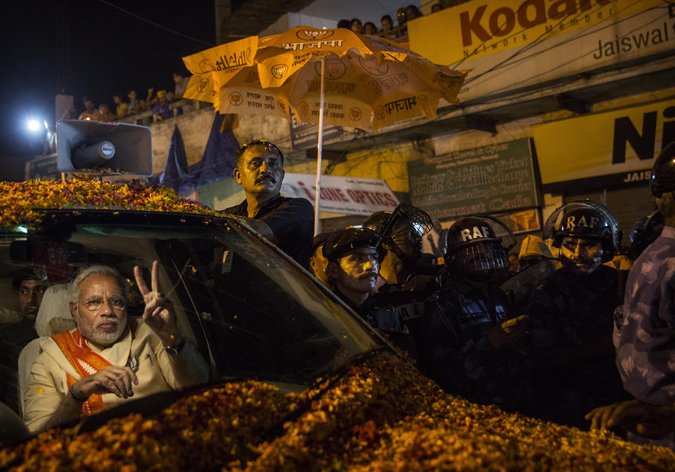
Shortly after dawn in the village square here each day, two dozen boys and men dress up in crisply laundered khaki shorts and fall into military-style formation behind a saffron-colored flag, brandishing bamboo sticks as if they were rifles.
They spend the next hour performing highly structured drills that interweave physical training with religious indoctrination, ending with 108 repetitions of the chant “Ram Ram,” which refers to a Hindu deity, and a song whose refrain is, “The nation should awaken.” This is a local branch of Rashtriya Swayamsevak Sangh, an ideological organization whose fortunes have ebbed and flowed for decades with the influence of Hindu nationalists in New Delhi.
With India’s national election campaign in its final stages, the R.S.S. has thrown its weight behind Narendra Modi, who has been active in the group since childhood and is now the front-runner for prime minister, India’s highest office. The group’s leaders describe the current voter-turnout drive as the biggest mobilization since 1977, when R.S.S. workers went door to door encouraging people to vote against Indira Gandhi, sometimes going so far as to wheel them to the polls on manual tricycles.

These activists count Mr. Modi as one of their own and see in him a chance to move long-cherished goals to the top of the national agenda. For years, they have sought a rollback of laws and programs tailored to India’s Muslims, the opening of Kashmiri property to buyers from other parts of India, and the redrafting of public school textbooks, among other goals.
As a candidate, Mr. Modi has made economic growth and development his central theme, building a vast electoral base that includes moderates and minority groups. He has pushed traditional Hindu-right projects to the margins of his campaign, and canvassers from the R.S.S. and its affiliates have avoided controversial subjects, limiting themselves mainly to exhortations to vote.
But in interviews, many expressed certainty that, with the election over, Mr. Modi would take action on a religious and cultural agenda.
Source: NYTimes








